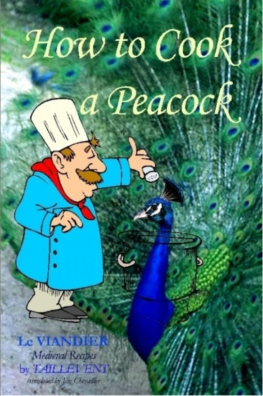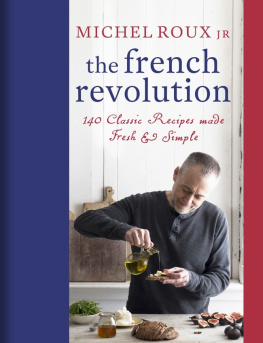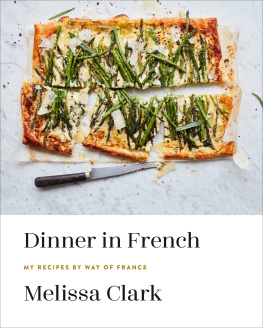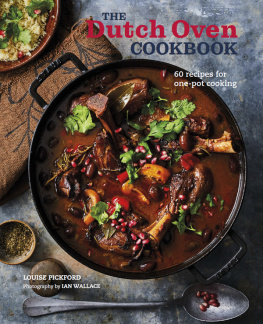How To Cook a Peacock:
Le Viandier
by
Taillevent
Translated by Jim Chevallier
SECOND EDITION
Copyright 2004, 2007 byJim Chevallier
All rights reserved,including the right of reproduction in any form.
Although the author andpublisher have made every effort to ensure the accuracy andcompleteness of this translation and any additional informationcontained in this book, we assume no responsibility for errors,inaccuracies, omissions, or any inconsistency herein. In addition,the reader is reminded that this is a translation of an historicaldocument. Any attempt to adapt these recipes from a previous erafor modern use is done at the reader's sole and completeresponsibility and risk.
To contact the translator,e-mail:
Visit www.chezjim.com for the most currentinformation.
Published by Chez Jim Books at Smashwords
Smashwords Edition,License Notes
This ebook is licensed foryour personal enjoyment only. This ebook may not be re-sold orgiven away to other people. If you would like to share this bookwith another person, please purchase an additional copy for eachperson you share it with. If youre reading this book and did notpurchase it, or it was not purchased for your use only, then youshould return to Smashwords.com and purchase your own copy. Thankyou for respecting the hard work of this author.
Table of Contents
NOTE: The headings for the Viander itselfare as in the original transcription.
No page numbers are applicable for thiselectronic edition.
NOTES AND GLOSSARIES
Old French terms left untranslated
Non-standard uses of familiar Frenchwords
Unusual ingredients
LE VIANDIER
To Make White Brewet Of Capons
To Make Fish Blancmange
To Make White German Brewet
To Make Salamine
To Make Brewet Georget
To Make Fish Gran
To Make Cinnamon Brewet With Meat
For That Of Fish
To Make A Cretonne Of New Peas
To Make Thin (Fasting) Pottage
To Make Spanish Cretonne
For Fish Cretonne
To Make Green Brewet
To Make Fish Brewet
For Covered Brewet
To Make Civet Of Hare
For Lark Gran
For Shrimp Gran
To Make Chaudum
To Make Mustard Soup
For Partridge Trimolette
For Seyme
For Gibelet Of River Bird
For Larded Boil of rabbit or poultry
For Brewet Rapp
To Make Venison In Soup
Venison Of Deer
Venison Of Wild Boar
To Make A Sorvige Of Eels
To Make A Mock Grenon
To Make Cold Sage
To Make Red [Dish]
To Make A Violet [Dish]
For Jelly
To Make Vinaigrette
Bousac
Geese Treason-Style
Rice
Fish Arbalesty
Galantine
Larded Milk
To Make A Morterel
Poussin Sabourot
Quail Brewet
For Fried Cream
For Haricoq
Wild Boar Head Cheese
Lamb Shoulder
For Moteaulx
Stuffed Poussins
To Make Sturgeon
Meat Sturgeon
To Make Pheasant And Peacocks In FullDisplay
To Make Fayenne
For Cele Preserve For Four
To Make A Potful
For Fish Fraze
Holy Water
For Steamed Poussins
Almond Irson
Eggs Roasted On The Spit
Meat Vintage
Fried Fresh Butter
Coulis
To Make Coulis
Fish Coulis
Another Coulis
Blanched Barley
For Potted Pastie
Gallimaufrey
Fricassees
Beef Pastie
Pastie With Warm Sauce
Veal Pastie
Pastie Of Capons
Pastie Of Halebran Capons
Pastie Of Capons
Chicken Pastie With Sauce Robert
Pigeon Pastie
For Ringdove [Pastie]
Mutton Pastie With Welsh Onion
Blackbird Pastie
Sparrow Pastie
Wild Duck Pastie
Kid Pastie
Gosling Pastie
Partridge Pastie
Rabbit Pastie
Hare Pastie
Stag Pastie
Wild Boar Pastie
Lorais Pastie
Marrow Pastie
Mullet Pastie
Bream Pastie
Trout Pastie
Eel Pastie
Conger Eel Pastie
Turbot Pastie
Red Mullet Pastie
Goatfish Pastie
Shad Pastie
Salmon Pastie
Lamprey Pastie
Cow Pastie
Leg Of Lamb Pastie
Common Tart
Two-Faced Tart
Dolphins
Make Oblongs
Jacobine Tart
Bourbonnaise Tart
Covered Tart
Talmouse
Two Faced Tart
Jacobine Tart
Apple Tart
Raw Pear Pastie
Bourbonnaise Tart
Darioles Of Cream
Cameline
My Ladys Sauce
To Make Poitevin Sauce
Jance
Garlic Sauce With Milk
Red Garlic Sauce
Garlic Sauce With Mustard
Small Wine Sauce
Dodine
Dodine Of Verjuice
Jeans Must
Saupiquet
Chaudum
Shad Sauce
Another Shad Sauce
Sauce With Must
White Beets
Milled Beans
Leeks
Onion Soup
Heads Of Cabbage
Gourds
To De-salt Soups
To Remove The Burnt Taste From All Soups
Boiled Large Meat Like Beef, Sheep, Pig
Sheep Bristle
Larded Boiled Meat
Wild Kid
Fresh Wild Boar
Capon And Veal With Herbs
Civet Of Singed Veal
THICK SOUPS
Pork Chaudin
Cretonne Of Peas
New Bean Cretonne
Cretonne Of Poultry
Almond Cretonne
Gran Of Small Birds
White Brewet Of Capons
Hare Bousac
Houdet Of Capons
Civet
Civet Of Hare
Civet Of Rabbit
CHAPTER ON ROASTS
Roast Pig
Roast Veal
Veal's Caul
Roast Mutton
Kid And Lamb
Goose
Roasted Hens
Boiled Fresh Wild Boar
Fresh Venison
Pigeons
Assorted Small Birds
Turtle Doves
Peacock
Storks
Pheasants
Bittern, Cormorant
Heron
River Ducks
Stuffed Suckling Pig
Stuffed Poultry
To Gild [The Poultry]
Mock Grenon
For A Fish Jelly
Warm Sauce
Chicken Shaken With Ginger
Fromanty
Fish Jelly With Meat Scum On It
Hundred Dishes Of Jelly
Lamprey
Cold Sauce
Mouthfuls of Rice
MEATS AND SOUPS FOR LENT
Beginning Of Fish
Green Sauce
Civet Of Oysters
Roast Pike With Chaudum
Flans And Tarts
Flemish Chaudeau
Coulis Of Perch
Blancmange
Fresh Water Fish
Lamprey
Cresme
Porpoise
Gurnard And Red Mullets
Mackerel
Salmon
Salt Water Fish
Cod
Cuttlefish And Cockles
UNBOILED SAUCES
Cold Sauce
BOILED SAUCES
Black Pepper
Yellow Pepper
Poitevin Sauce
Jance
Green Verjuice
[DRINKS]
Clairet
Hypocras
Spices Used In The Present Viander
AFTERMATTER/MEALS
Of the feast served in the wood by the seathe sixth day of June,
for my lord of Mayne, and my lady ofChasteaubrun
Banquet Of My Lord Of Foyes
Banquet Of My Lord Of La Marche
Banquet Of My Lord Of Estampes
Banquet For My Lady
BIBLIOGRAPHY
TAILLEVENT
Did the Frenchking's cook have a big nose? This is one explanation given for thenickname "Taillevent"("Slice-wind") given to Guillaume Tirel, thefourteenth century cook who served two kings (Philippe de Valoisand Charles V), among other luminaries. The portrait on his tombhowever does not show a pronounced proboscis. What is sure is thata cookbook credited to him was long regarded as the firstprofessional French cookbook. The discovery of a similar work thatpredates his birth has not dislodged him from his place in Frenchculinary history, and a famous restaurant in Paris still bears hisname. The work's title, Le Viandier, can only be translatedinto archaic English as "The Viander"or "The Victualler". Though inmodern French viande means "meat", at this time it referredto any food, and so the closest modern sense of the title is, quitesimply, "cookbook". Several very different versions of the bookexist. This translation is of the so-called "FifteenthCentury"version, which is the least coherent and most fragmentaryof the few versions known. The recipes in it range from fairlydetailed explanations, complete with measurements, to cursorysuggestions of how to serve the dish in question (with no realexplanation of how to make it). For a modern reader, theingredients range from the familiar - chicken, eggs, peas, etc. -to the exotic; some would say barbaric: heron, stork, swan . - andyes, peacock.








